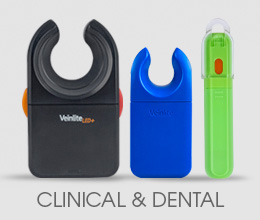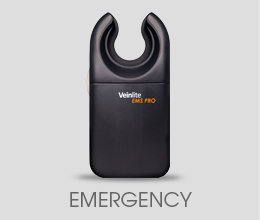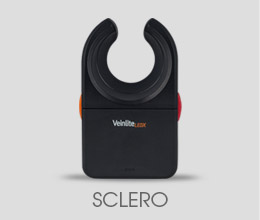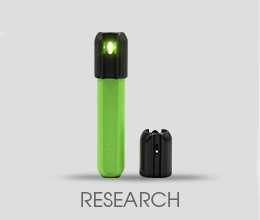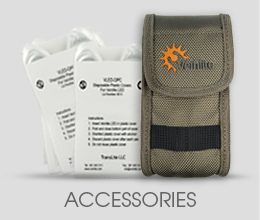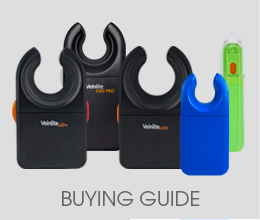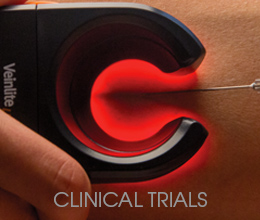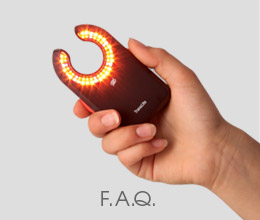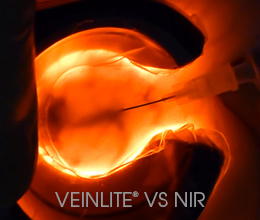Randomized Clinical Trials Show That Veinlite® Is Better Than AccuVein® AV300 and VeinViewer® for Venous Access
Randomized Clinical Trials are the gold standard for assessing how a device compares to standard of care (current method of vein access). Several clinical trials have now been done to assess whether vein finder devices help improve vein access in children and adults. These devices include the Veinlite®, AccuVein® AV300, VeinViewer® and VeinLuminator™.
The results show that the Veinlite® clearly improves vein access in children, while near infrared devices, such as AccuVein® AV300 and VeinViewer®, are NO better than standard of care.
The following is a list of randomized clinical trials with a short summary of the results and the name of the device used. A full abstract of the publication can be obtained from the National Library of Medicine by clicking on the link below or from the web site www.pubmed.gov.
Summary of randomized clinical trials with Veinlite®, AccuVein® AV300 and VeinViewer®
STUDY # |
DEVICE |
# of PATIENTS |
RESULTS |
| 10 | Veinlite® | 240 | YES, IMPROVED |
| 2 | AccuVein® AV300 | 1913 | NO DIFFERENCE |
| 5 | AccuVein® AV300 | 266 | NO DIFFERENCE |
| 6 | AccuVein® AV300 | 146 | NO DIFFERENCE |
| 2 | VeinViewer® | 1913 | NO DIFFERENCE |
| 4 | VeinViewer® | 299 | NO DIFFERENCE |
| 7 | VeinViewer® | 155 | YES, NEONATES |
| 8 | VeinViewer® | 323 | NO DIFFERENCE |
TABLE 1 – Summary Table of randomized clinical trials done with Veinlite®, AccuVein® AV300 and VeinViewer® to determine if these devices help during venous access in children and adults. Please review the attached literature summaries for additional information about the studies.
Literature Search Results from the National Library of Medicine on Transilluminators and Near Infrared Devices for Vein Access
Meta Analysis of Transilluminators and Near Infrared Devices for Vein Access in Children
1. A systematic review and meta-analysis of new interventions for peripheral intravenous cannulation of children(1)
RESULTS – The results show that transilluminators improve first attempt cannulation while NIR devices did not impact the first attempt success rate.
2. Examining therapeutic interventions for the perioperative area(11)
RESULTS – The results show that Veinlite® would be a useful device in assisting to identify venous access sites in patients. The device was proven to be easy to use and most people would use the Veinlite® if it were available for their use.
3. Transillumination by light-emitting diode facilitates peripheral venous cannulations in infants and small children.(9)
RESULTS – LED-transillumination assisted in cannulation. Success increased for first attempts as well as time of cannulation.
4. Veinlite® transillumination in the pediatric emergency department: a therapeutic interventional trial.(10)
RESULTS – Improved cannulation success rate within two attempts in comparison to standard care.
NIR Devices
1. Near-infrared light to aid peripheral intravenous cannulation in children: a cluster randomized clinical trial of three devices.(2)
RESULTS – The results showed that NIR devices did NOT improve first attempt success rates for cannulation in children up to 18 years of age compared to using NO device by nurses.
2. Efficacy of a near-infrared light device in pediatric intravenous cannulation: a randomized controlled trial.(3)
RESULTS – The study found that NIR devices did not affect first-attempt cannulation overall.
3. The VeinViewer® vascular imaging system worsens first-attempt cannulation rate for experienced nurses in infants and children with anticipated difficult intravenous access.(4)
RESULTS – VeinViewer® resulted in 47% success rate vs. 62% in regular cannulation. The VeinViewer® decreased success rates in cannulation overall. The trial was stopped due to the low success rate for VeinViewer® compared to nurses not using the device.
4. Efficacy of AccuVein® AV300 to facilitate peripheral intravenous placement in adults presenting to an emergency department: a randomized clinical trial.(5)
RESULTS – There was no change in time to cannulation with or without the AccuVein® AV300 . However, there was an increase in pain due to movement when using the AccuVein® AV300.
5. A randomized controlled trial comparing the AccuVein® AV300 device to standard insertion technique for intravenous cannulation of anesthetized children.(6)
RESULTS – There was no significant difference in using the AccuVein® AV300 device versus the standard of care. The AccuVein® AV300 did assist in finding veins, but the results showed little to no difference in cannulation attempts.
6. A randomized trial of the VeinViewer® versus standard technique for placement of peripherally inserted central catheters (PICCs) in neonates.(7)
RESULTS – The VeinViewer® was helpful in successful placement of cannulation, especially in infants.
7. VeinViewer®-assisted Intravenous catheter placement in a pediatric emergency department.(8)
RESULTS – The results showed no difference in using the VeinViewer® and standard of care. The study does suggest faster PIV placement in children 2 years of age and younger.
Veinlite® is a registered trademark of TransLite, LLC. All other registered trademarks or trademarks are property of their respective owners.


